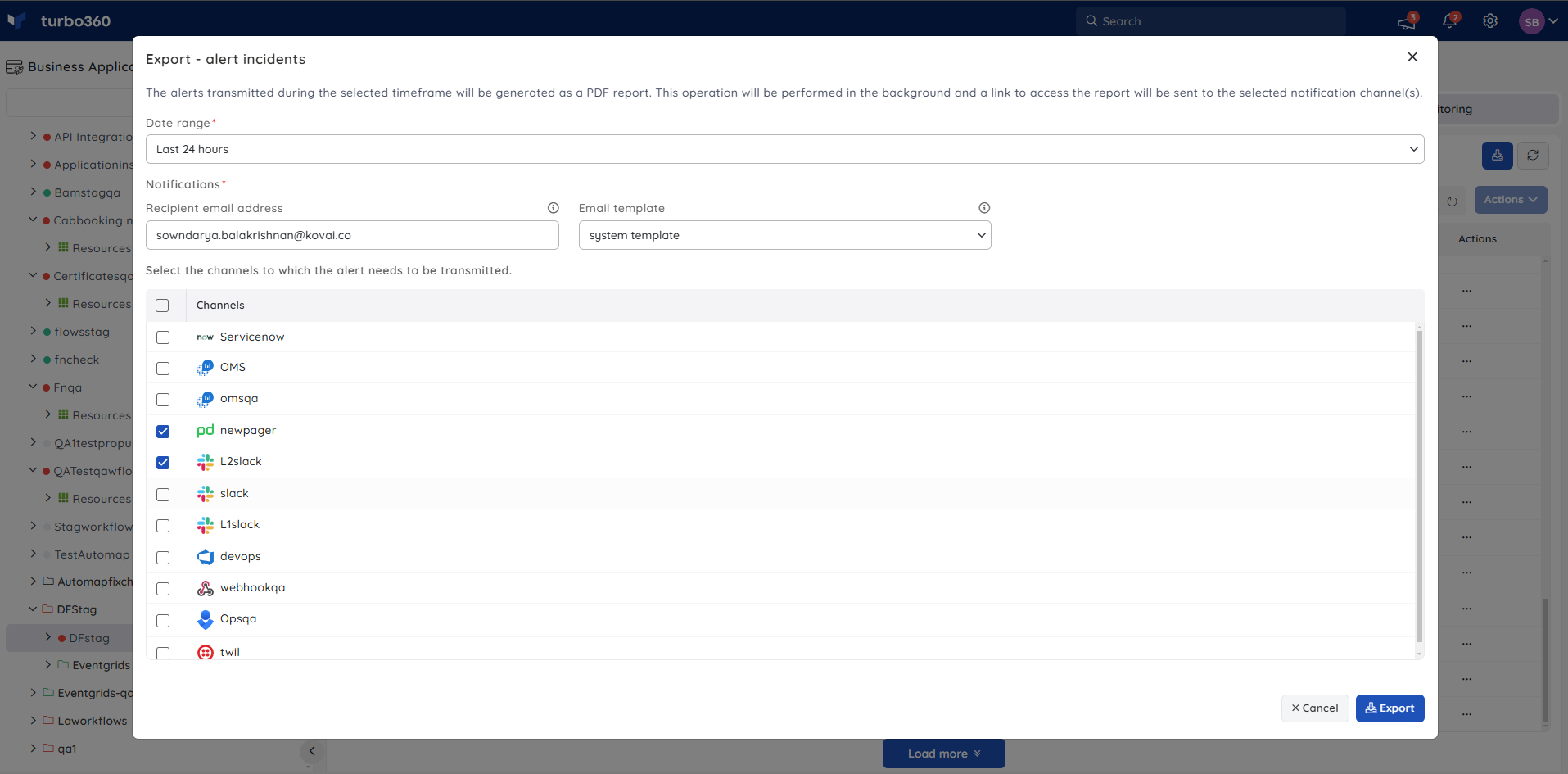- 19 Nov 2024
- 2 Minutes to read
- Print
- DarkLight
- PDF
Incidents
- Updated on 19 Nov 2024
- 2 Minutes to read
- Print
- DarkLight
- PDF
Introduction
Violation and up alerts triggered by Turbo360 monitoring will be recorded as incidents, which users can resolve at their convenience.
Alert incidents
- Users can view the list of alert incidents generated for a Business Application in the following section Monitoring->Incidents.
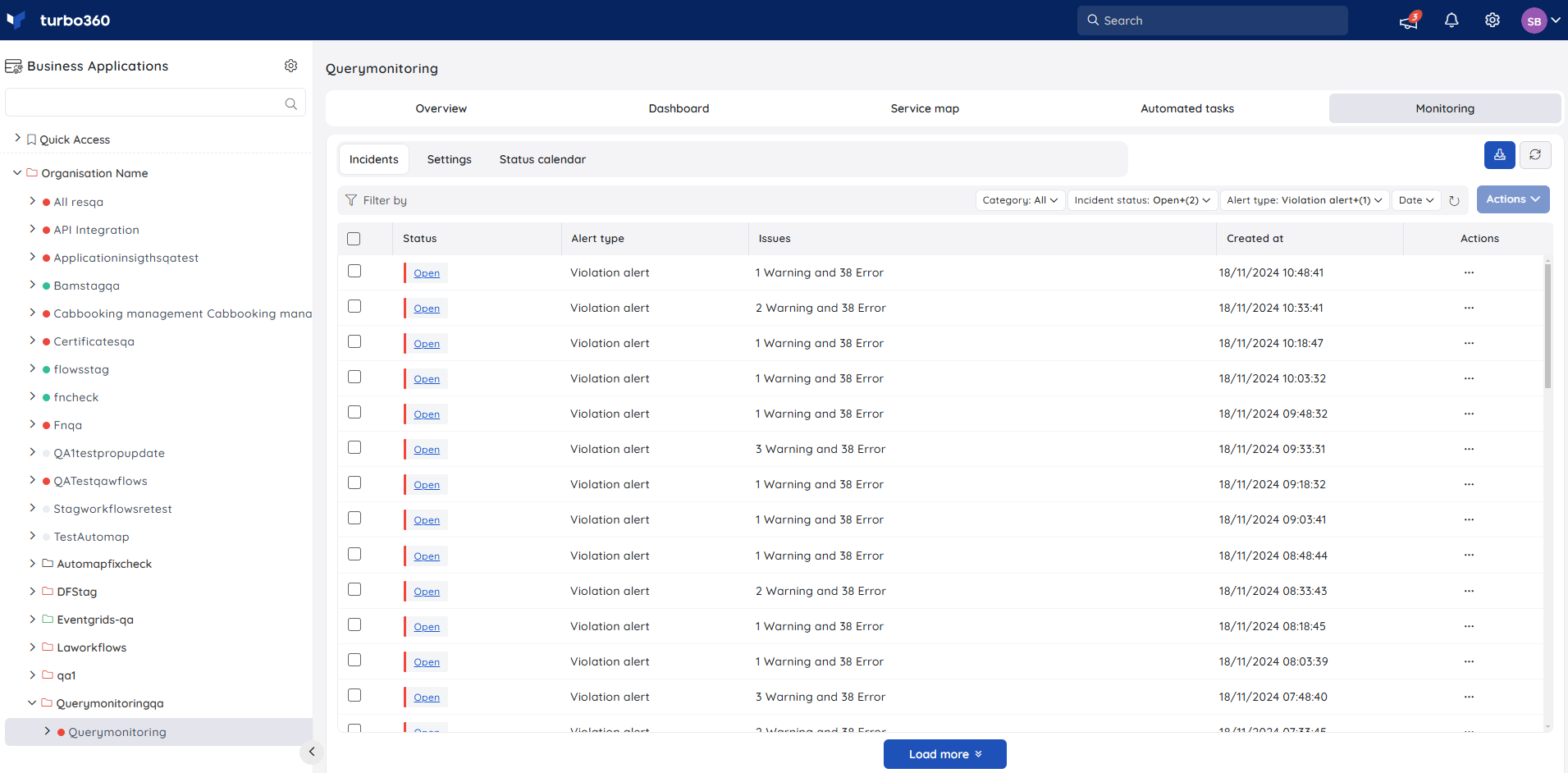
- The details of the incidents can be accessed by clicking the state.
The image shown below is the Alert details of a violation alert received in a Business Application
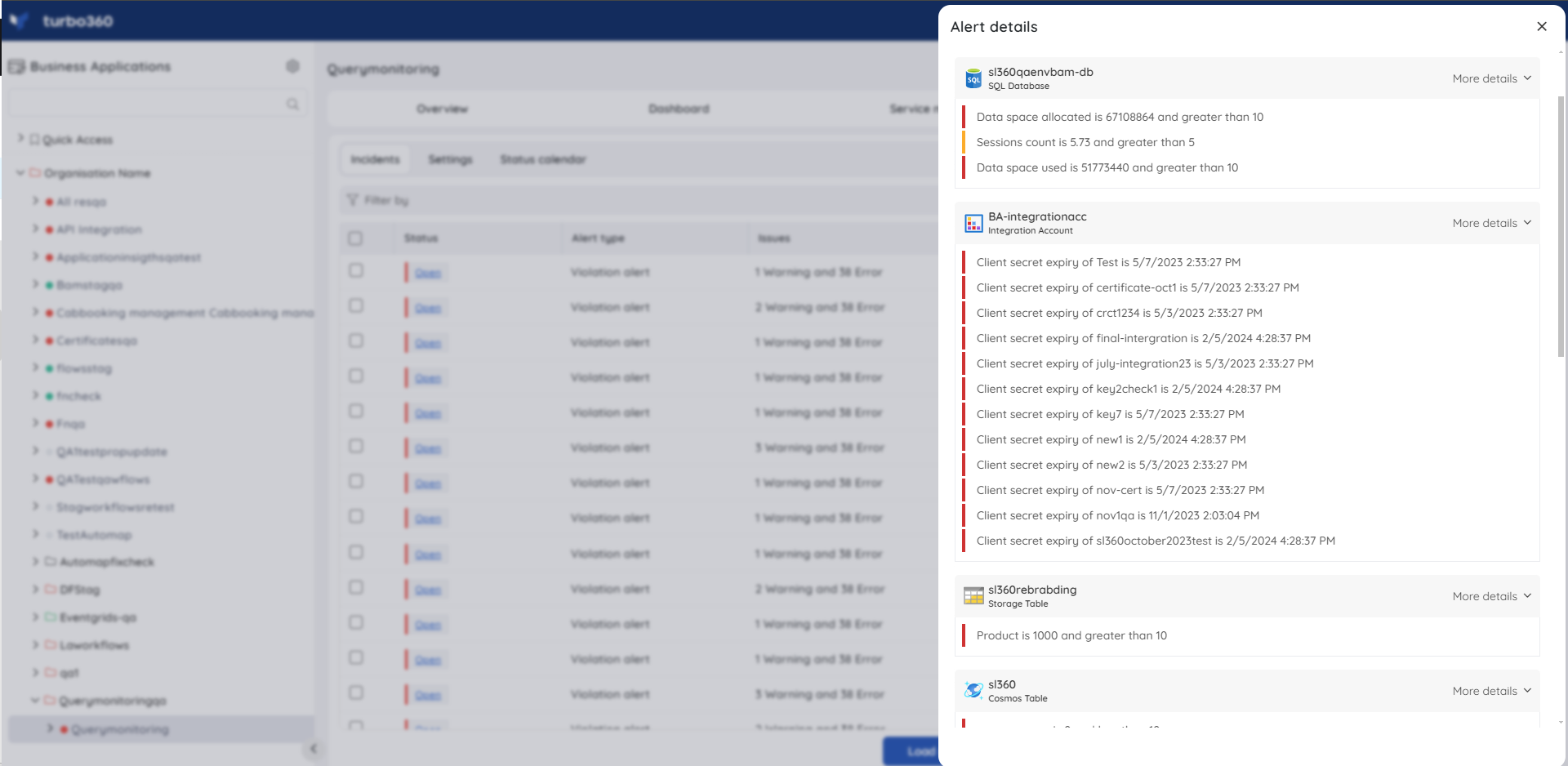
Resolving incidents
An alert incident can be changed to any of the following states:
- Open - when there are violations in an incident
- Acknowledge - when the user intends to investigate the violations
- Close - when the user believes that the violations are resolved and the alert incident is no longer useful
- Reopen - when the user feels that the incident is still problematic
The incident state can be changed individually by selecting the respective option in the context menu (or) be changed in bulk by selecting the required incidents and choosing the respective option from the Actions dropdown.
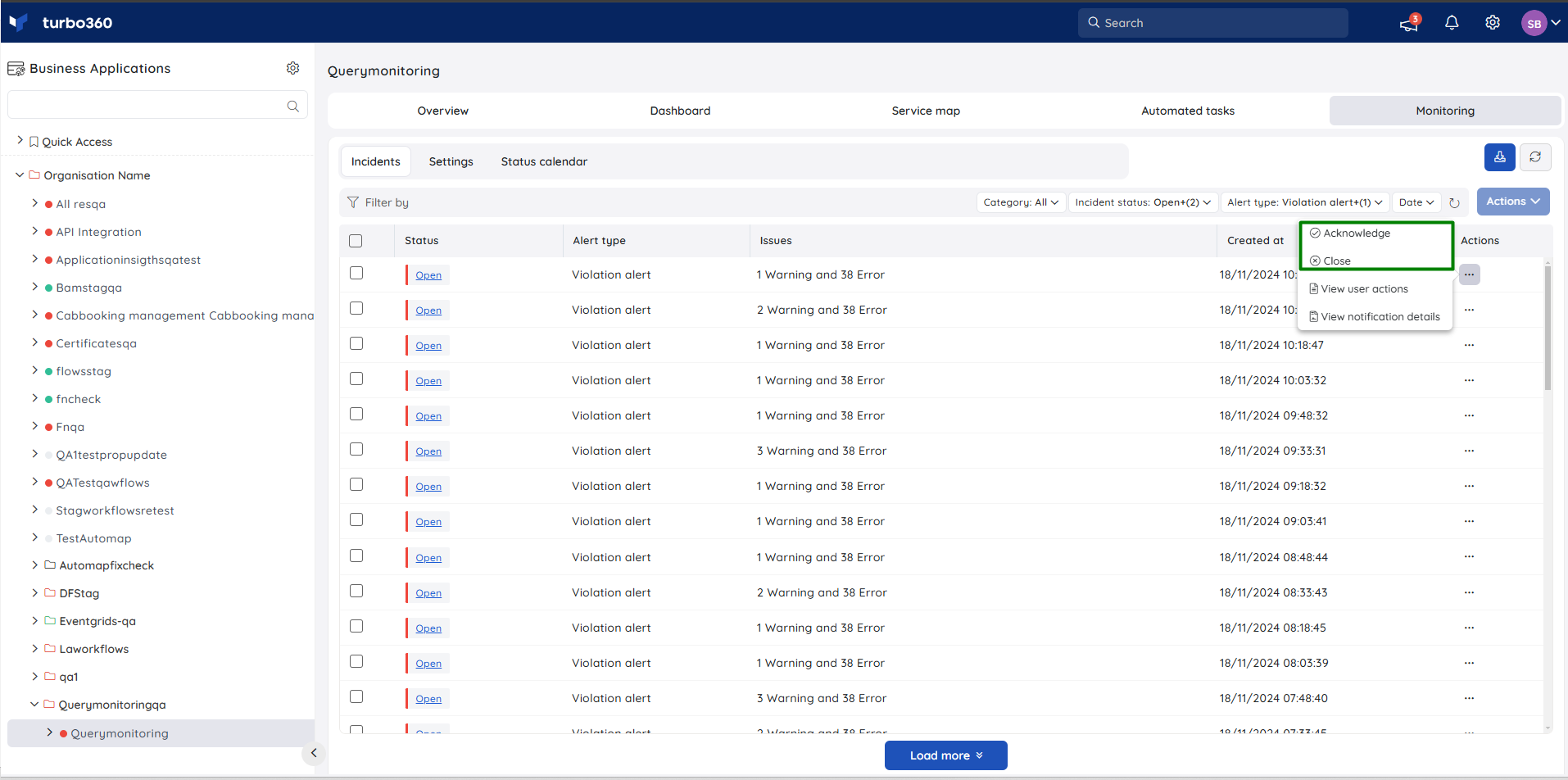
Once all the resources in a Business Application have transitioned from an error to a healthy state, previous alert incidents concerning the old violations should be addressed. Manually resolving incidents one at a time is a time-consuming process, but one that you can automate.
By enabling the Auto resolve incidents checkbox in the monitoring configuration at a Business Application monitoring level (or) in a profile mapped to a Business Application, all the previous incidents will be automatically resolved when all the resources in the respective Business Application turn healthy.
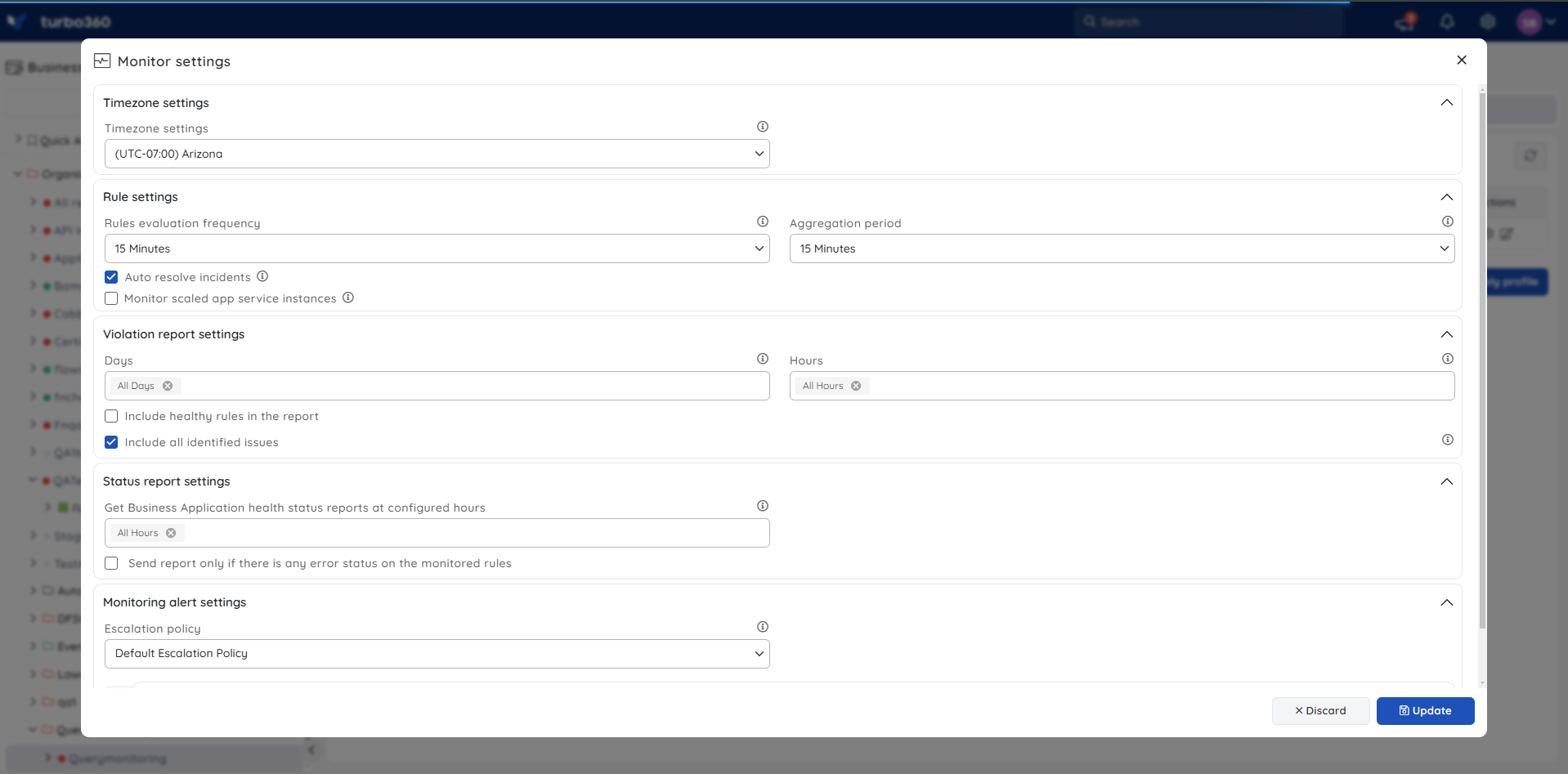
An up alert is generated simultaneously to all configured channels and email addresses in the next monitoring cycle, indicating that the business application contains healthy resources.
The image given below is a sample Up alert received in Turbo360 mail:
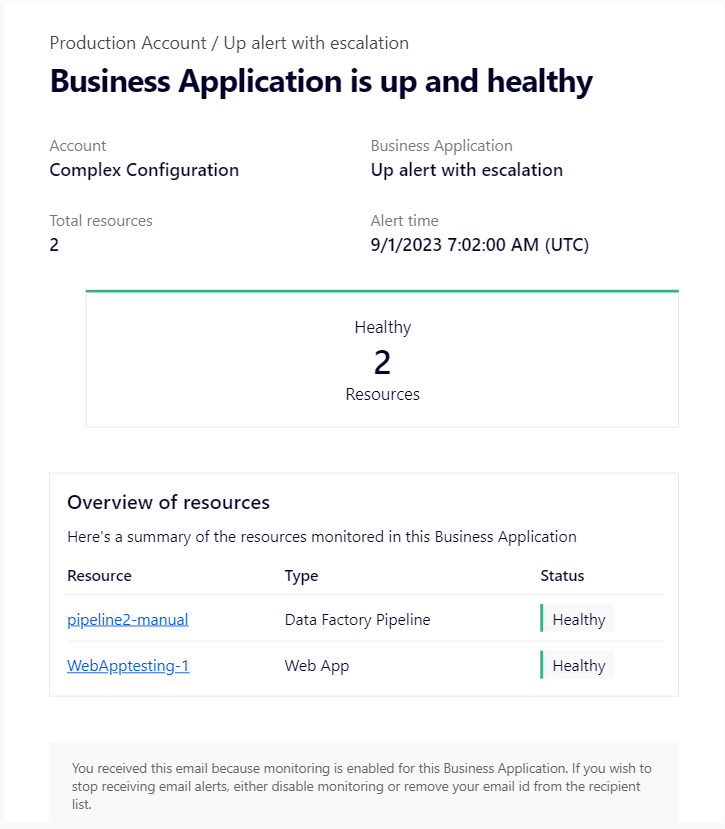
As for the escalation policy, the up alert will be generated up to the rule level at which the violation alert is escalated.
Up alerts are generated only when the Business Application has previously generated at least one violation alert.
Tracking user actions
By choosing the view user actions option from the context menu of an incident, it is possible to track the user actions for an alert incident. The details includes the user's email id, the time the action was taken, and the change in incident state.
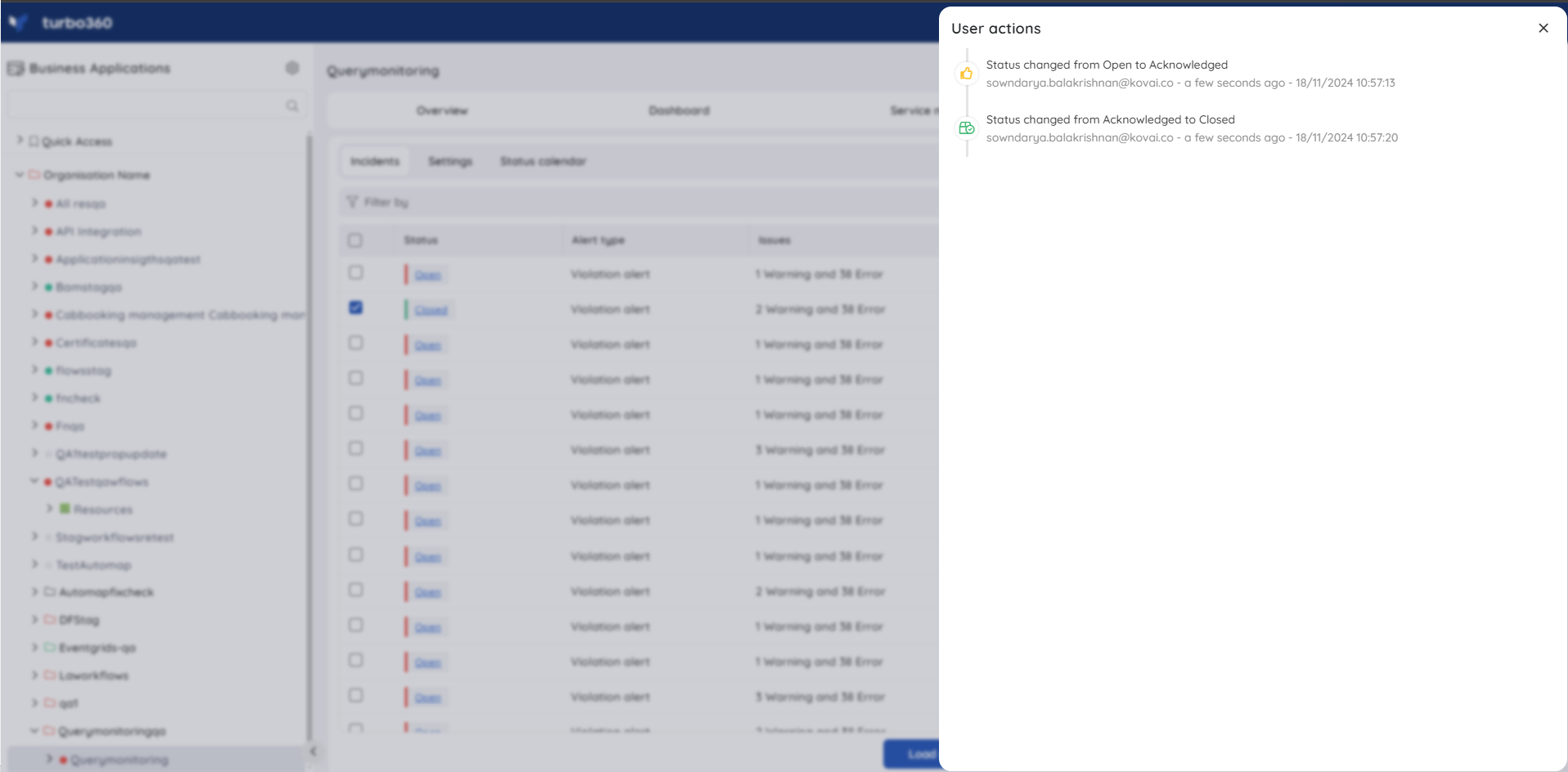
Notification history
- The details of notification channels for each transmitted alert can be viewed by selecting view notification details option from the context menu of an incident.
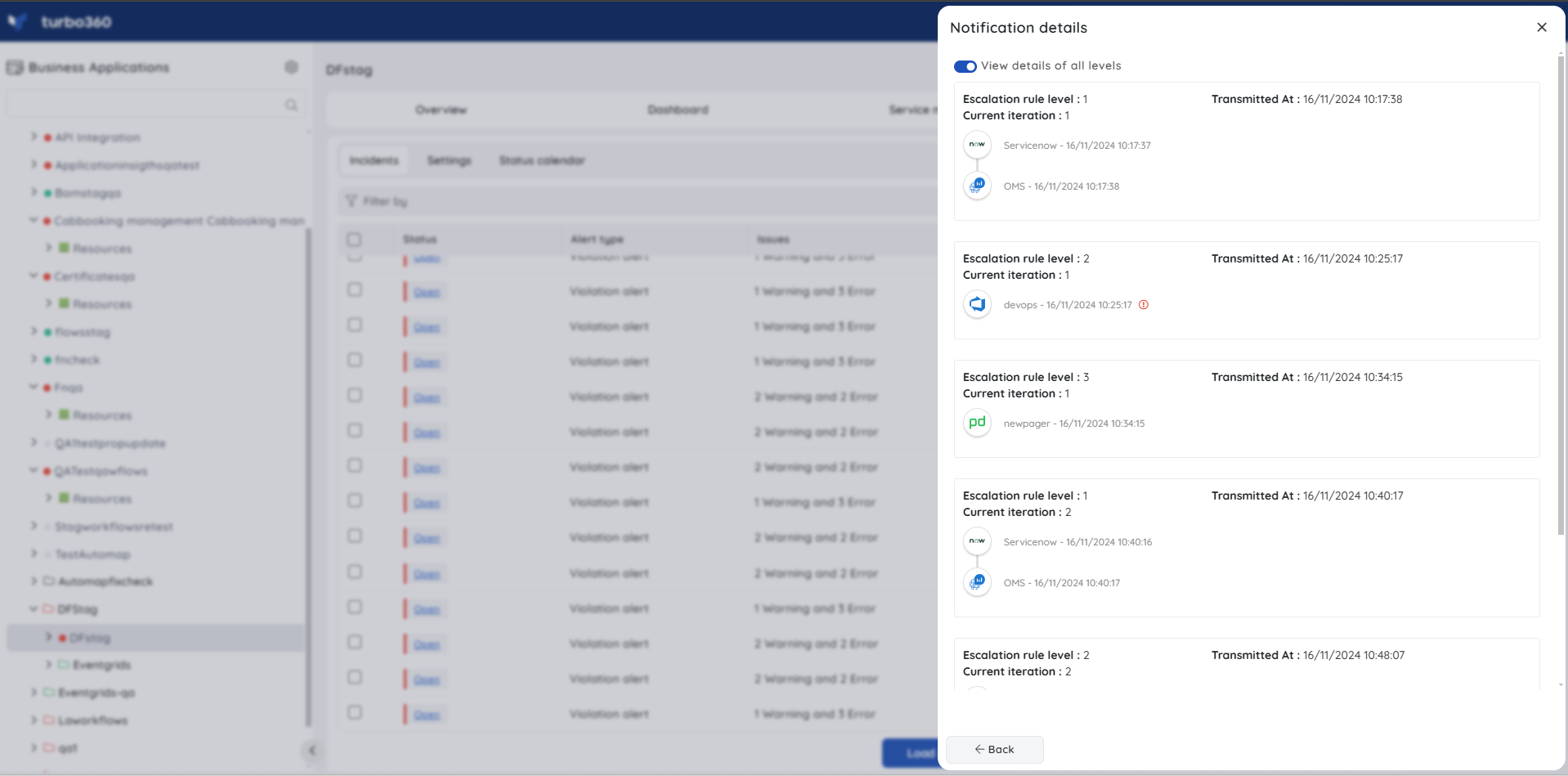
- If a Notification channel transmission is failed, the reason for failure will be available against the alert.
Filtering
Following options are available to filter the incidents
- Category
- Incident Status
- Alert Type
- Date
Exporting incidents
The Incidents transmitted within a Business Application can be exported as a PDF report.
- Click the Download option available in the Monitoring section of a Business Application.
- Choose a Date range, in which the incidents are created and choose the Notification channel(s) for which the user wants the report to be sent.
- Clicking Export option will initiate a task in the background and the report will be forwarded to the selected notification channels upon completion of the generation.
A link to access the report will be sent to the selected notification channel(s) selected.
